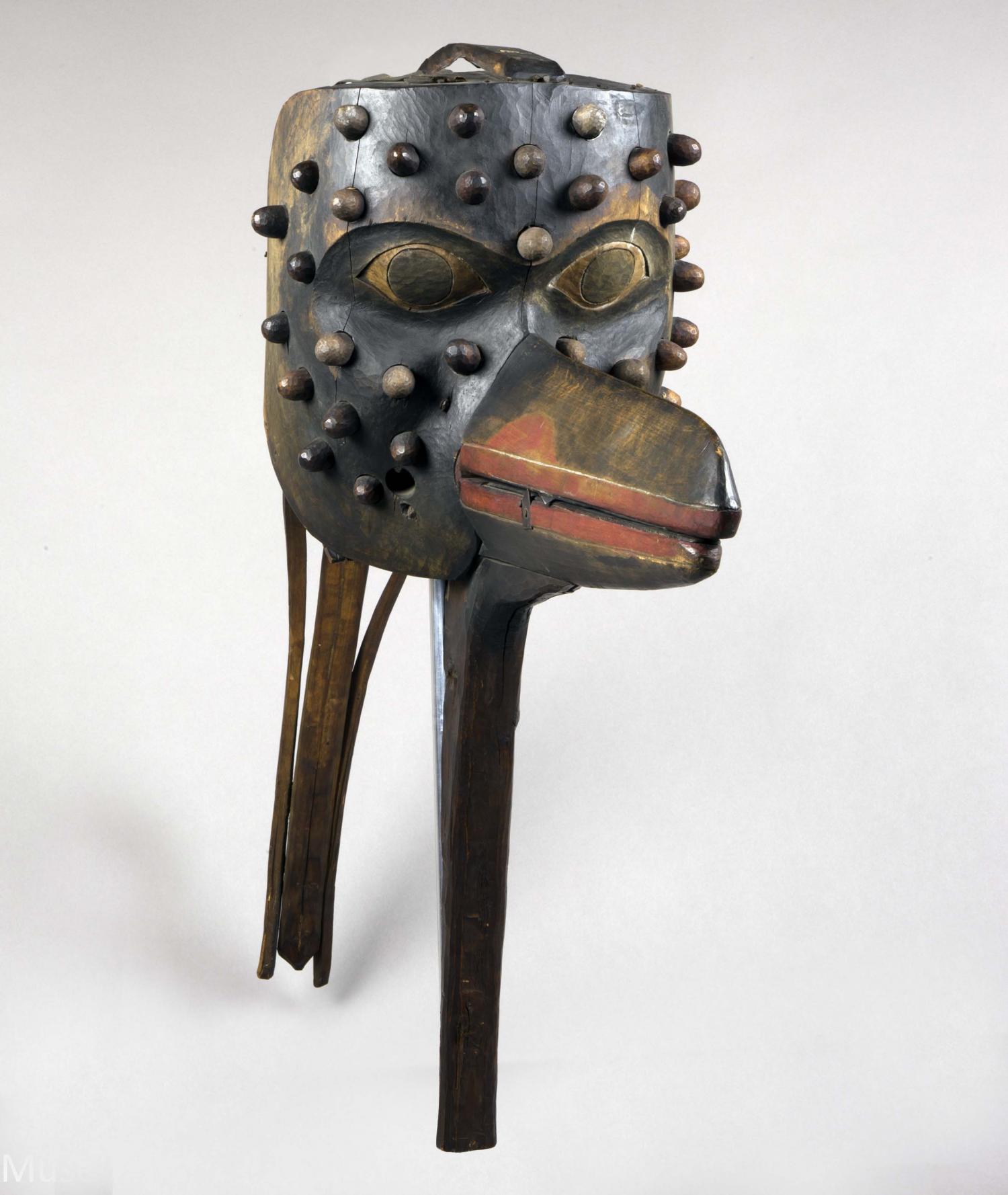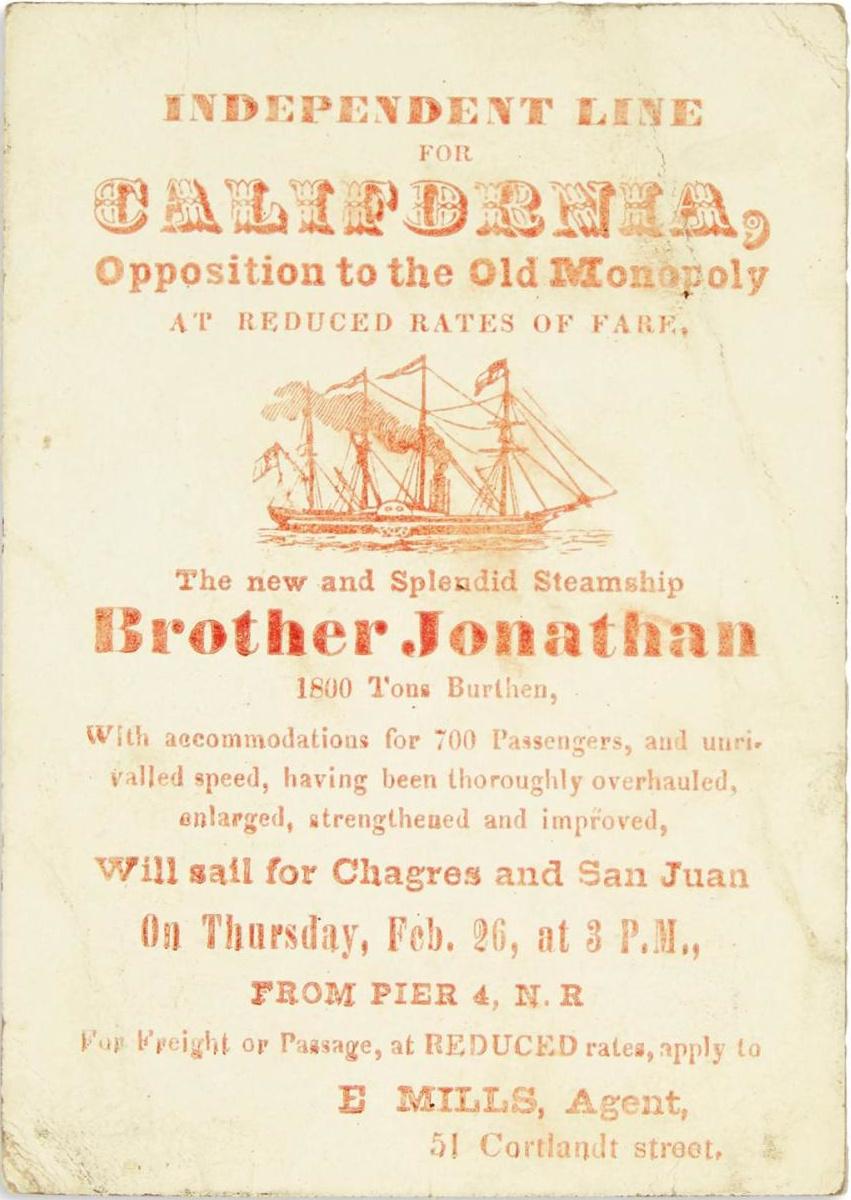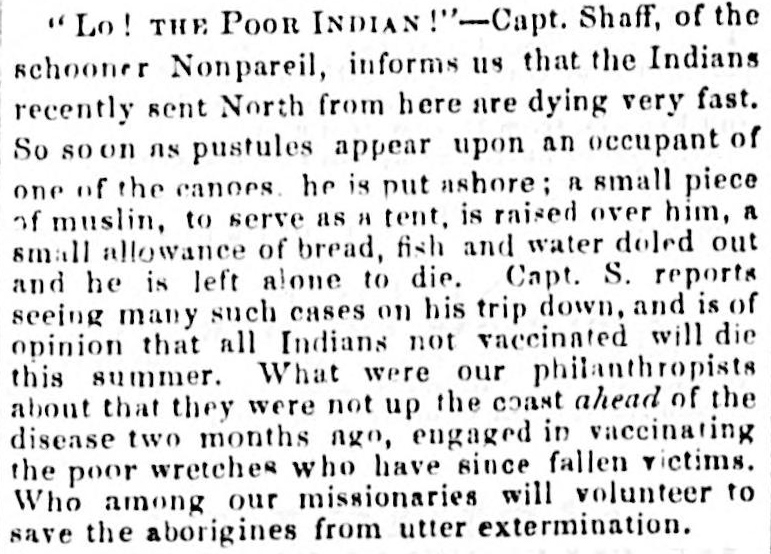The 1862 Smallpox Epidemic
The deadliest outbreak in B.C. history devastates the local Indigenous population
Date: 1862
On March 12, 1862, a steamship named Brother Jonathan arrived in Fort Victoria. One of its 350 passengers, a gold miner from California, carried with him something that would bring tragedy to vast swaths of British Columbia: the smallpox virus. Indigenous communities bore the brunt of the devastation.
After the Hudson's Bay Company established Fort Victoria in 1846, the outpost became an important economic and cultural hub for many First Nations along the northern coast, like the Tsimshian, Haida, Tlingit, Heiltsuk, and Kwakwaka'wakw. Community members often travelled down to set up camp nearby for trade, employment and opportunities to socialize. When the Brother Jonathan docked in the spring of 1862, this Indigenous migrant population numbered around 2,000.
Upon arrival, the virus quickly spread throughout the migrant camp. But the British colonial government made no serious attempt to quarantine the ill nor vaccinate the healthy. Instead, it burned down the encampments and forced its Indigenous residents to return to their respective communities. British gunboats followed closely behind their canoes to ensure they complied with the forced exodus. From there, the virus spread further up the coast and proved exceptionally lethal. By conservative estimates, tens of thousands of Indigenous people died from smallpox within only 15 months; some villages were left with no survivors. The incredible loss of life had another tragic outcome. As Indigenous communities perished, untold amounts of their knowledge and traditions were lost, as well.
While the 1862 smallpox outbreak was the most deadly, it wasn't the first. From 1775 to 1782, the disease had spread across the entirety of the continent. Nor was smallpox the only fatal foreign disease threatening Indigenous communities at the time. Between 1774 and 1919, measles and influenza also disproportionately ravaged First Nations in the Pacific Northwest.
It's unclear whether these viruses were intentionally spread; to this day, many Indigenous argue this was the case. Regardless, the carnage wrought by these viruses undoubtedly facilitated colonization. No longer perceived as a threat, the Indigenous population had instead become the "Vanishing Indian," a false notion Europeans used to justify the subjugation of a "dying race." More settlers would soon arrive on B.C.'s shores, forever transforming the landscape while further marginalizing the people who had long called it home.
Sources:
1. Boyd, Robert T. Coming of the Spirit of Pestilence: Introduced Infectious Diseases and Population Decline among Northwest Indians, 1774-1874. University of Washington Press, 1999.
2. Boyd, Robert. Smallpox in the Pacific Northwest: The First Epidemics. BC Studies: The British Columbian Quarterly, Spring 1994, ojs.library.ubc.ca/index.php/bcstudies/article/view/864.
3. Harris, Cole. Voices of Disaster: Smallpox around the Strait of Georgia in 1872. Ethnohistory (Duke University Press), Autumn 1994, www.jstor.org/stable/482767.
4. Lange, Greg. Smallpox Epidemic of 1862 among Northwest Coast and Puget Sound Indians. History Link, 2 Feb. 2003, www.historylink.org/File/5171.
5. Ostroff August 1, Joshua. How a Smallpox Epidemic Forged Modern British Columbia. Maclean's Magazine, 1 Aug. 2017, www.macleans.ca/news/canada/how-a-smallpox-epidemic-forged-modern-british-columbia/.





